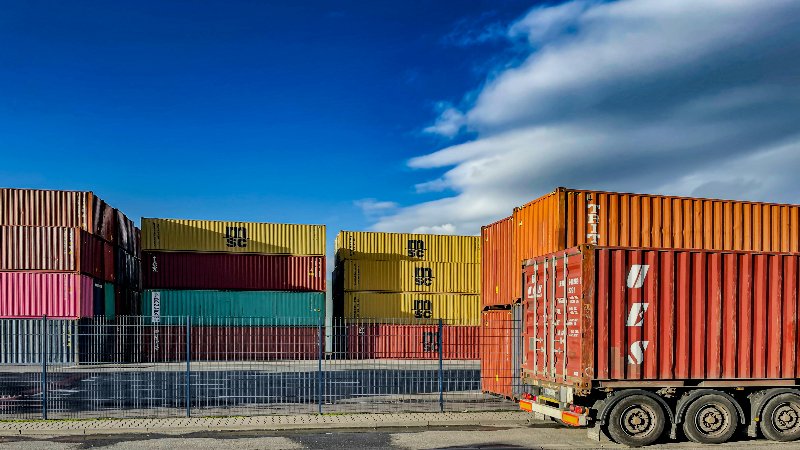The modern supply chain faces an ever-changing landscape of challenges. From material shortages to unpredictable demand patterns, businesses across industries are finding that traditional methods of operation are no longer sufficient.
Flexibility, adaptability, and resilience have become the cornerstones of sustainable industrial success. Organizations now recognize that thriving in this dynamic environment requires more than quick reactions; it demands proactive strategies that integrate flexibility into every stage of the supply chain process.
A flexible industrial approach not only helps in navigating disruptions but also ensures long-term stability and growth. By embracing solutions that allow for swift changes in logistics, production, and storage, companies can better position themselves to meet fluctuating market needs while maintaining efficiency and quality.
Embracing Mobility and Adaptability in Logistics
Recently, many companies have turned to mobile and adaptable infrastructure to meet evolving logistics needs. One practical example is when organizations choose to buy shipping containers as versatile solutions for transport and on-site storage.
These containers provide immediate space for goods while being easily movable between locations. Their adaptability makes them ideal for businesses that require scalable storage or temporary facilities during supply chain transitions.
This approach demonstrates how flexibility can minimize downtime and optimize operational efficiency. Instead of investing in permanent infrastructure that may not suit future needs, companies can rely on modular, portable solutions that change as their company does.
Flexible Manufacturing for Rapid Response
Manufacturing flexibility is another critical aspect of overcoming supply chain challenges. Businesses that can modify their production processes, switch suppliers, or reconfigure manufacturing lines without long periods of downtime are much more resilient to erratic circumstances.
The focus is now shifting from large-scale, rigid production setups to smaller, modular facilities that can adapt quickly to market demands.
This strategy reduces dependency on a single production model and ensures that disruptions in one area do not bring the system to a complete stop. For instance, adopting modular assembly units enables manufacturers to scale operations up or down as needed, enhancing their capacity to effectively manage resources.
Creating Diversified Supply Networks to Increase Resilience
An adaptable supply chain depends heavily on diversification. Businesses that rely on a single supplier or a limited geographic source are more vulnerable to disruptions. By establishing a broader network of suppliers and partners, companies create a buffer that allows them to continue operations even when part of the chain experiences difficulties.
Diversification can take several forms, including regional sourcing, multi-tier supplier relationships, and partnerships with logistics providers that offer flexible service models. When necessary, this approach allows for the redirection of materials and products through alternative routes, thereby minimizing delays and ensuring continuity.
Leveraging Scalable Storage and Distribution Systems
Storage and distribution are among the most critical components of supply chain management, and their flexibility directly impacts the flexibility of an organization. Businesses can better manage their inventory levels with scalable storage systems, which can handle changes in demand without resulting in additional expenses or delays.
Temporary or modular storage facilities, for example, can be deployed during periods of high activity or seasonal demand spikes. Similarly, flexible distribution networks enable companies to reroute deliveries or shift transportation methods based on changing conditions. These strategies enhance efficiency and reduce risks associated with unpredictable shipping delays or warehouse limitations.
Innovation as a Foundation for Flexibility
Innovation is at the core of every adaptable industrial solution. Companies that encourage creative thinking and experimentation are better positioned to discover new ways to navigate challenges. Innovative technologies, such as advanced analytics and predictive modeling, enable organizations to foresee potential supply chain disruptions before they occur.
Strategic Planning and Workforce Agility
A flexible supply chain is supported by a workforce that can adapt swiftly to new challenges. Cross-functional training ensures employees possess a range of skills that allow them to step into different roles when needed. This adaptability minimizes disruptions when operations need to pivot or scale.
Strategic planning also plays a vital role in maintaining flexibility. Organizations that regularly assess their processes, anticipate risks, and establish contingency plans are better equipped to manage uncertainties. The key lies in developing strategies that are not static but evolve with changing conditions.
Changing for Sustainability in the Long Run
Sustainability and flexibility often complement each other. A supply chain that adapts efficiently is one that wastes fewer resources and responds intelligently to shifts in the environment. Sustainable industrial solutions emphasize durability, reusability, and long-term value, aligning operational goals with broader environmental and economic objectives.
By prioritizing adaptable systems, companies can reduce their reliance on nonrenewable materials, improve energy efficiency, and ensure that their operations remain viable even under restrictive conditions. This perspective transforms flexibility from a short-term survival tactic into a sustainable business philosophy.
Final Thoughts
Adapting to supply chain challenges is not merely about reacting to immediate disruptions but about building a framework capable of continuous evolution. Flexible industrial solutions provide the tools, strategies, and mindset required to thrive in an uncertain world.
Through adaptable logistics, modular manufacturing, diversified sourcing, scalable storage, innovative thinking, and workforce agility, businesses can navigate complexities with confidence.
In an environment where change is the only constant, flexibility has become the true measure of resilience. Those who embrace it will withstand challenges and shape the future of global industry.
